Amazon Kindle: A history of the world’s best e-reader
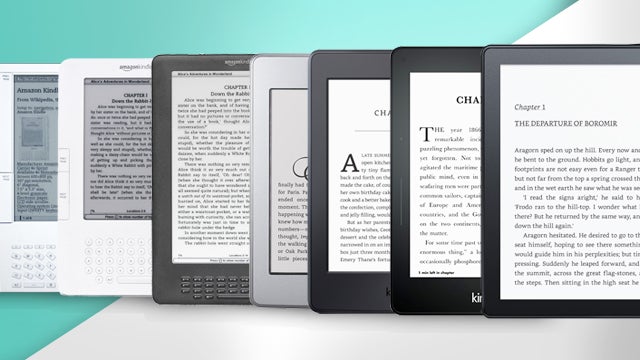
Since Amazon’s Kindle e-reader was first introduced in 2007, the device has undergone a series of design changes. We take a look back at the various generations Amazon’s most iconic piece of hardware.
Now that Amazon has officially unveiled its new Kindle Oasis, the world’s most popular e-reader has transitioned into its eight generation.
With an ultra-lightweight design, plus an included charging cover that delivers months of battery life, the Kindle Oasis looks to be the most advanced e-reader Amazon has yet released.
Video: Check out our hands-on impressions of the Kindle Oasis
But the Kindle started life as a very different device. The original 2007 version, with its slanted keyboard and 6-inch screen, looks completely unrelated to the sleek Oasis model. As with all technology, it’s taken some years to reach this point, with numerous design innovations and refinements being introduced over successive years.
The launch of the Kindle Oasis therefore gives us the opportunity to revisit the various stages of the Kindle’s evolution. Let’s take a look at what came before.
Buy Now: Kindle Oasis at Amazon from £269.99
Amazon Kindle (2007)
With 250MB internal storage and a 6-inch display capable of producing a staggering four shades of grey, the original Kindle seems more than a little outdated by today’s standards. At the time however, this was the must-have device for readers.
Related: Best ebook readers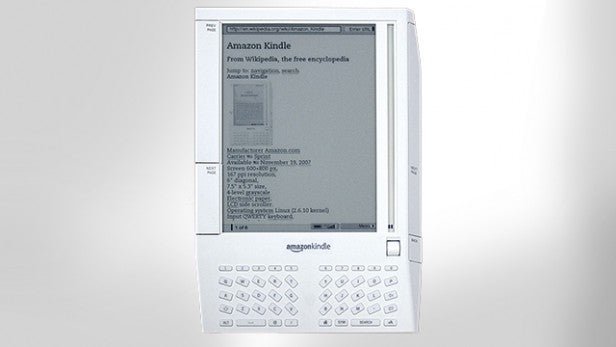
Amazon’s first e-reader, only released in the US, sold out in five and a half hours and remained unavailable for five months. It seems people at the time couldn’t wait to pay the $400 necessary to get their hands on this bulky contraption with its strange slanted keyboard and angled edges.
Still, this was the only Kindle to ever feature expandable storage and allowed users free access to the innovative Whispernet system for downloading books over 3G.
Kindle 2 (2009)
After the original Kindle’s runaway success, Jeff Bezos and co. decided the world was ready for an updated version in 2009.
Although the second-generation device looked very similar to the original, retaining the keyboard and large, though slightly thinner, case, there were a number of big improvements that came with it. Firstly the internal storage jumped from 250MB to 2GB, meaning the Kindle 2 could hold around 1,500 non-illustrated books as opposed to the original’s meagre 200.
Related: Kindle Oasis vs Paperwhite
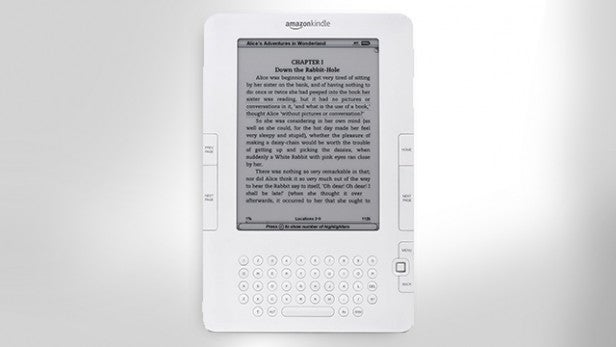
Secondly, Amazon added a text-to-speech feature that meant the Kindle 2 could read your books aloud to you, in case you fancied bringing the magic of Proust to life with a creepy robotic voice.
Originally selling for $360, the second-gen Kindle was another big success for Amazon, which released an international version of the device in October 2009.
Kindle DX & Kindle DX Graphite (2009 & 2010)
Not content with releasing one new version of its e-reader in 2009, Amazon also introduced the world to the Kindle DX.
With 4GB internal storage and a 9.7-inch screen, the DX included support for PDF files, plus an accelerometer, allowing readers to quickly switch between portrait and landscape views. The larger screen was designed to encourage newspapers and similar publications to make the transition to e-readers.
Related: Best tablet 2016
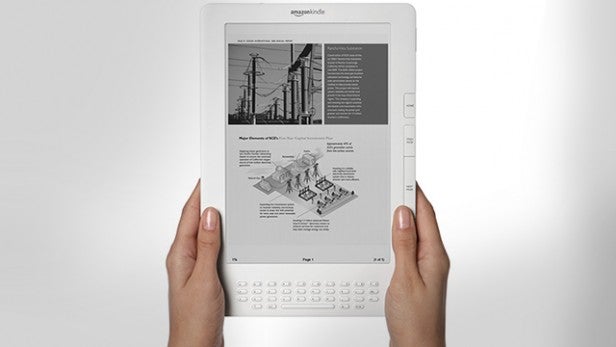
Starting at $490 in the US, this was the most expensive Kindle yet. An international version, which included support for international 3G connectivity, soon followed the original’s release, with a second-generation DX arriving in July 2010.
The second DX was called the Kindle DX Graphite, in reference to the new darker colour, and went on sale for a slightly more reasonable $379. With a much-improved e-ink display, featuring a 50% better contrast ratio when compared to the original DX, the DX Graphite marked a significant improvement over its predecessors.
Related: Amazon Fire HD 8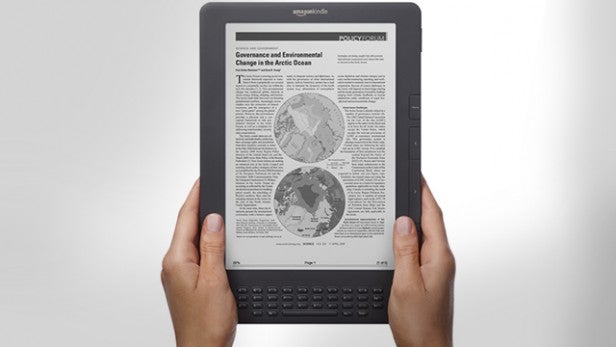
However, the DX Graphite failed to sell as well as Amazon had hoped, and was discontinued in early 2012. Although the Graphite would reappear in 2013 at the reduced price of $199, it would be banished for good in May 2014.
Kindle 3 (2010)
Otherwise known as the Kindle Keyboard, which seems strange considering every Kindle up until this point featured a keyboard, the Kindle 3 pared things down after the comparatively huge Kindle DX. This slimmed-down iteration included a 6-inch screen and the same 4GB internal storage as its predecessor.
Related: Best Amazon Prime Instant Video movies

Most significantly however, the Kindle (2010) was the first Amazon e-reader to feature a Wi-Fi option and originally hit the market in at the mercifully low price of $140. Those who wanted Wi-Fi and 3G connectivity could shell out for the $189 version.
That low price-point helped the Kindle 3 become the fastest-selling Kindle ever, prompting Amazon to release a ‘Kindle with Special Offers’ device. This shamelessly commercialised version was exactly the same as the Kindle 3 but featured ads and sold for the lower price of $114.
Kindle 4 (2011)
Announced in September 2011, the fourth generation Kindle (2011) kept the same 6-inch E-ink display as the Kindle 3 but came in a slightly lighter and smaller case.
Related: Best Amazon Prime Instant Video TV shows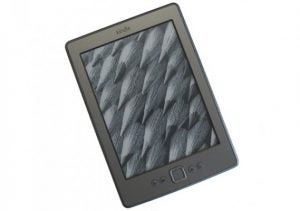
Notably absent from the Kindle 4 however, was the traditional Kindle keyboard. In its place were four physical buttons and a cursor pad, with an on-screen keyboard replacing the physical one. Also missing from the Kindle 4 was audio functionality, with the 3.5mm audio jack removed in favour of a more portable form-factor.
All of this meant Amazon could launch the Kindle 4 at the lowest price for one of its e-readers yet. The ad-supported version originally hit the market at $79, while the regular model started at $109.
Kindle Touch (2011)
Also released in September 2011, the Kindle Touch was the first ever touch-screen Kindle. Physical page-turn buttons were eschewed in favour of the touch functionality, likely due to the rising popularity of tablets (the iPad debuted a year before the Kindle Touch). Other than the touch features, the screen was the same 6-inch E-ink display that could be found on the Kindle 4
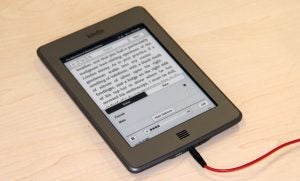
Unlike the Kindle 4 however, this touch-screen version did feature audio functionlity, with two stereo speakers on its sides. Other extra features included X-Ray – software that allows you to view pre-loaded reference information about a characters in a book without having to connect to the internet.
The Wi-Fi version started at $99 for the ad-supported model, while the regular Wi-Fi version started at $139. Fans of 3G connectibity could pay $149 or $189 for the ad-supported and non-ad-supported versions respectively.
Kindle 5 (2012)
2012 saw the release of the Kindle 5, which swapped the Kindle 4’s silver-grey finish for a black bezel. This affordable device featured better contrast than its predecessor, with Amazon claiming the Kindle (2012) could also load pages 15% faster.
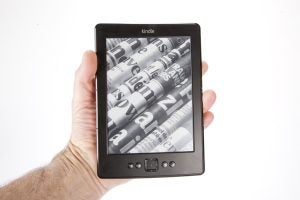
At 170g, it was also the lightest Kindle yet. And with a starting price of $69 for the ad-supported version, it was also the cheapest. Of course, Amazon had to make cuts somewhere in order to get the price down, and as such the Kindle 5 saw internal storage reduced to 2GB.
Kindle Paperwhite (2012)
2012 proved to be a big year for the Kindle. Not only did the most affordable Amazon e-reader yet hit the market, Amazon also managed to fix a problem that had plagued Kindle owners for years: reading in the dark. Rival devices such as the Nook and Kobo Glo already offered backlights, and now it was time for Amazon to catch up.
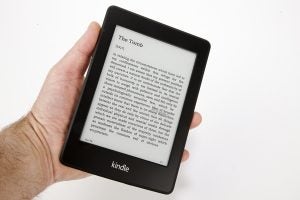
With the Kindle Paperwhite, no longer were readers reliant on other lights or lamps in order to use their e-readers. Not only did the integrated LED lights make the Paperwhite the first Kindle you could read in the dark, the 6-inch screen also featured an enhanced pixel density, making for a crisper image.
Initially, only US readers were gifted with the Paperwhite’s revolutionary functionality, with international customers having to wait until early 2013 to get their hands on Amazon’s premium e-reader.
Kindle Paperwhite 2 (2013)
A year after the first Paperwhite came the ‘all new Paperwhite’, known colloquially as the Paperwhite 2.
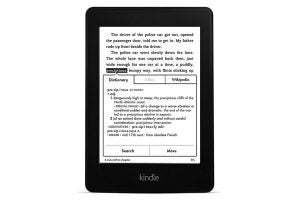
The first e-reader to use E-ink Carta display technology, pages would load on the Paperwhite (2013) incredibly quickly. Amazon also packed in improved LED illumination, and a 1GHz processor which made the second-gen Paperwhite 25% faster than the original.
In terms of design, the Paperwhite 2 looked much like the first Paperwhite, and featured the same 6-inch screen with 221ppi as the first-gen device, plus the same 28 hour battery life.
Kindle 7 (2014)
By 2014, Amazon had all but won the e-reader battle. With rivals dispatched, the company unveiled a new budget Kindle (2014), known as the Kindle 7.
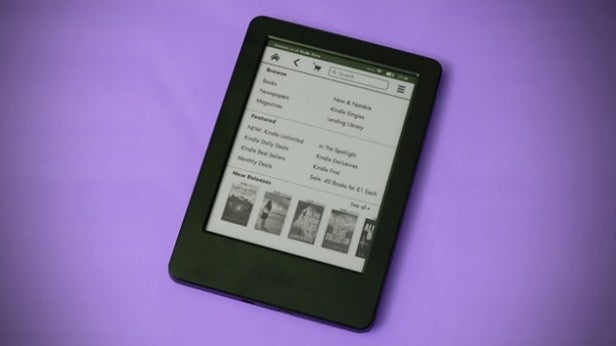
Physical buttons were completely absent from the Kindle 7, which was the first basic Kindle to rely on touch-screen navigation. It also included a 1GHz processor and 4GB internal storage. And at $80 for the ad-riddled version, those impressive specs came at a surprisingly affordable price.
The catch? No integrated light. Investing in the Kindle 7 meant becoming beholden to artificial light sources once again. Still, if you could deal with the lack of LED lighting, the 2014 basic-level Kindle offered some decent specs at a price most could afford.
Kindle Voyage (2014)
Amazon may have reached peak Kindle with this 2014 entry. The lightest, smallest, and most advanced e-reader yet to arrive, the Kindle Voyage not only includes display illumination, but also adjusts the backlight based upon ambient lighting conditions.
With a 300ppi E-ink Carta HD display, this high-end offering featured the best display available on an e-reader. That is, until the arrival of the Oasis. It also features haptic feedback via the new PagePress controls, which mimic the physical controls of older Kindles but use pressure-sensitive ‘haptics’ instead.
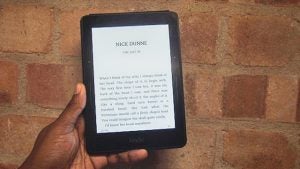
With all these top-end features, you’d have expected the Kindle Voyage to be the most expensive entry in the Kindle range yet. But at $199 for the ad-supported version, e-reading fans were given the opportunity to pick up a great product at a very reasonable price, even if it was too high for those who thought it was only marginally better than the $119 Paperwhite 3.
Kindle Paperwhite 3 (2015)
Sitting between the Kindle 7 and Kindle Voyage, the Kindle Paperwhite 2015 is Amazon’s current mid-range e-reader. Released in June 2015, the Paperwhite 3 has the same 6-inch, 300ppi E-ink Carta HD display as the Voyage, but lacks the ambient lighting features. It’s also got the same 4GB internal storage as its two counterparts.
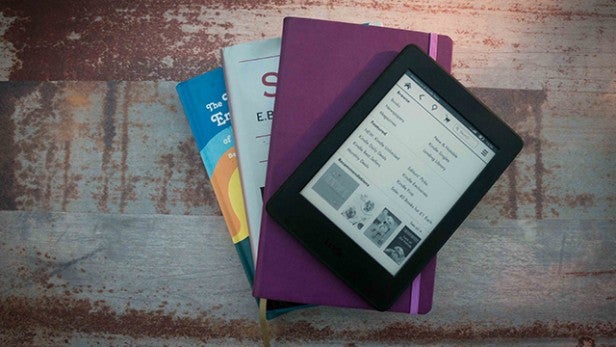
One standout feature is the battery life. Amazon says the latest Paperwhite can last 6 weeks on a single charge if used for 30 minutes per day. Starting at $119 for the ad-supported version, it’s also the best value Kindle available.
While the 2015 Paperwhite brought very little in terms of design changes, its dramatically improved screen combined with a fairly low price point made it an almost irresistible option.
Kindle Oasis (2016)
The most dramatic Kindle design overhaul of recent years comes with the Kindle Oasis. Amazon’s latest e-reader entry. The Oasis was debuted on April 13, 2016 and features an incredibly thin display and an ergonomic grip.
Amazon says the Oasis’ reimagined shape is designed for extended reading sessions. The asymmetrical shape shifts the centre of gravity to your palm, making the device rest in your hand like the spine of a book. Aside from the touch display, there’s also physical buttons which allow you turn the page.
https://twitter.com/statuses/720272851215908866
Plus, Amazon has catered for lefties with a built-in accelerometer which detects whether you’re reading with your left or right hand, and automatically rotates the page and page turn buttons to match.
Weighing just 131g, thanks to the new featherweight polymer frame, and measuring just 3.4 mm at its thinnest point, the Oasis is 30% thinner on average and over 20% lighter than any other Kindle. All good stuff considering Amazon’s somewhat confusing aim to make the Kindle ‘disappear so you can lose yourself in an author’s story’.
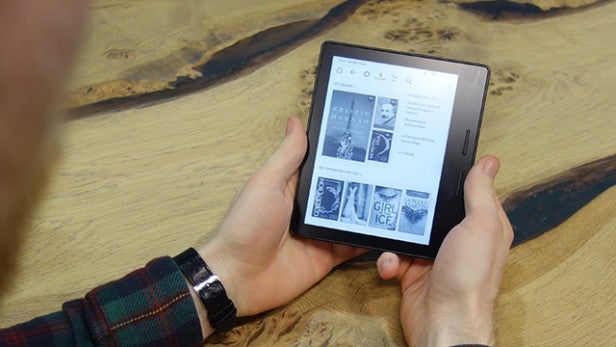
As part of that mission, Amazon packed the Oasis with a 300ppi Paperwhite display featuring 60% more LEDs. All of which makes this the brightest Kindle display ever. What’s more, the Oasis has the best battery life of any Kindle, thanks to a new dual-battery system. The device’s case has its own battery, meaning that once you connect the cover, the battery in the cover begins recharging the Oasis automatically, making for months of battery life.
The Oasis is available for pre-order now and starts at £269.99.
(apester:570e610ec35c4ea67044214b)
Got a favourite Kindle? Let us know which one and why in the comments.

